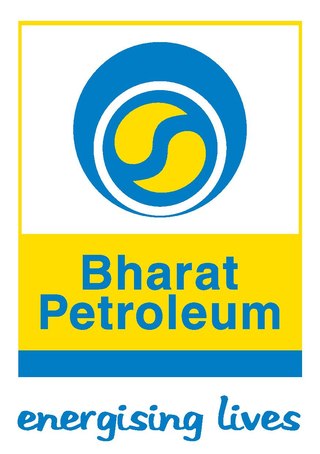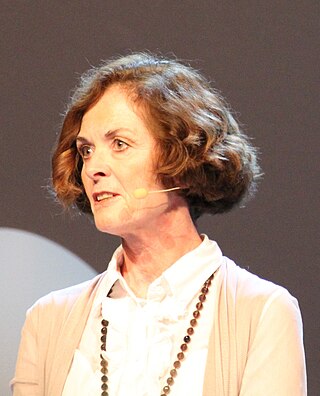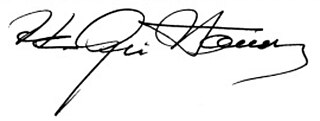
Statoil ASA was a Norwegian petroleum company established in 1972. It merged with the oil and gas division of Norsk Hydro in 2007 and was known as StatoilHydro until 2009, when the name was changed back to Statoil ASA. The brand Statoil was retained as a chain of fuel stations owned by StatoilHydro. Statoil was the largest petroleum company in the Nordic countries. In the 2013 Fortune 500, Statoil was ranked as the 39th -largest company in the world. While Statoil was listed on both the Oslo Stock Exchange and the New York Stock Exchange, the Norwegian state still held majority ownership, with 64%. The company's headquarters are located in Norway's oil capital Stavanger. The name Statoil was a truncated form of the State's oil (company).

The Troll A platform is a Condeep gravity-based structure offshore natural gas platform in the Troll gas field off the west coast of Norway. Built from reinforced concrete, as of 2014, it was the tallest structure that has ever been moved to another position, relative to the surface of the Earth, and is among the largest and most complex engineering projects in history. The platform was a televised sensation when it was towed into the North Sea in 1995, where it is now operated by Equinor. It is also the heaviest object moved and the object with the second highest displacement at 1.2 million tons(the object with the highest displacement is the Gullfaks C, which had a displacement approaching 1.5 million tons in comparison with Troll A's 1.2 million). Troll A was towed from the afternoon 10 May 1995 until the platform was in place 17 May 1995. It was lowered to the seabed in 303 meters of water, and had penetrated 36 meters into the soil by 19 May 1995. It was self-supporting with no further mooring required.

Bharat Petroleum Corporation Limited (BPCL) is an Indian public sector oil and gas company, headquartered in Mumbai. It is India's second-largest government-owned downstream oil producer, whose operations are overseen by the Ministry of Petroleum and Natural Gas. It operates three refineries in Bina, Kochi and Mumbai. BPCL was ranked 309th on the Fortune Global 500 list of the world's biggest corporations in 2020, and 1052nd on Forbes Global 2000 in 2023.

The Minister of Energy is a councilor of state and chief of the Norway's Ministry of Petroleum and Energy. The current minister is Terje Aasland. The ministry is responsible for the government's energy policy, including management of Norway's energy resources, including the valuable deposits of petroleum and hydroelectricity. Major subordinate agencies and companies include the Water Resources and Energy Directorate, the Petroleum Directorate, Petoro, Gassnova, Gassco, Enova, Statnett and a partial ownership of Statoil. The position was created on 11 January 1978 as a response to the increased importance of oil on the Norwegian continental shelf. The position was merged with the Minister of Trade and Industry between 1992 and 1996. It was renamed Minister of Energy starting from 1 January 2024.

Mongstad is an industrial site in Vestland county, Norway. The site sits on the border of the municipalities of Alver and Austrheim, with most of the site in Alver. The site features an oil refinery for Equinor and other oil companies, including Shell. At Mongstad, Equinor has a crude oil terminal with a capacity of 9.5 million barrels (1,510,000 m3). The port at Mongstad is the largest in Norway, measured in tonnage. The refinery at Mongstad is modern, and has been extensively upgraded, with a capacity of 12 million tonnes of crude oil per year. The refinery is the largest in Norway, though medium-sized by European standards. It is owned by a company called Mongstad Refining, in which Equinor has whole ownership.

Equinor ASA is a Norwegian state-owned multinational energy company headquartered in Stavanger, Norway. It is primarily a petroleum company operating in 36 countries with additional investments in renewable energy. In the 2020 Forbes Global 2000, Equinor was ranked as the 169th-largest public company in the world. In 2023, the company was ranked 52nd in the same list. As of 2021, the company has 21,126 employees.

Hydro Oil & Gas is a defunct division of Norsk Hydro that operated within the oil and gas industry. On October 1, 2007 it merged with Statoil to form the new corporation StatoilHydro.
Svein Rennemo is a Norwegian businessperson and former chair of Statoil.
Thorvald L. Mellingen was a Norwegian engineer.

Topaz was an Irish petroleum retail chain, which had a presence across the island of Ireland. The legal entity was formed in 2005 and previously traded under the Statoil and Shell brands, until 2008 when the Topaz brand replaced both in Ireland. It acquired Esso's Irish operations in 2015. In June 2018, The Topaz brand was replaced by Circle K.

Siri Beate Hatlen is a Norwegian businessperson. A "Sivilingeniør" by education with several years in the petroleum industry, since 1996 she has been an independent consultant. After succeeding in turning operations in various companies in the late 1990s, she has become best known as a health executive. She was the chair of the Eastern Norway Regional Health Authority during its entire existence from 2001 to 2006, later chief executive officer of Oslo University Hospital from 2009 to 2011.
Gassled is a partnership to own the offshore natural gas transportation infrastructure at the Norwegian continental shelf. Its pipelines are operated by Gassco.

Gro Merete Brækken is a Norwegian businessperson known for her extensive leadership experience in various sectors including oil, refinery, natural gas, shipbuilding, banking, and aid and development. She has held significant roles in both national and international companies and organizations.
Brage is an offshore oil field in the North Sea located 120 km (75 mi) northwest of the city of Bergen on the western coast of Norway and 13 km (8.1 mi) east of Oseberg Field Center. The field also contains gas. The water depth at the location is 140 metres (460 ft). The field was developed with a fixed integrated production, drilling and accommodation facility The oil from the field is pumped through a pipeline to Oseberg A facility from where it is transported to Sture terminal via Oseberg Transport System. The gas from the field is exported through Statpipe system to Kårstø. It is estimated that Brage may hold up to 20,000,000 barrels (3,200,000 m3) to 25,000,000 barrels (4,000,000 m3) of recoverable oil.
Marit Reutz is a Norwegian businessperson.

Henrik Julius Ager-Hanssen was a Norwegian nuclear physicist and businessperson. He spent his career in the nuclear energy sector from 1956 to 1975, then in the petroleum company Statoil from 1976 to 1998.

Margareth Øvrum is a Norwegian engineer and business executive. Since 1982 she has worked for Statoil where she was an executive vice-president from 2004 to 2020.
The Castrol Technology Centre is a research institute owned by BP in South Oxfordshire, north of Whitchurch-on-Thames.

Algeria–Norway relations are the bilateral relations between Algeria and Norway. Algeria has an embassy in Oslo and Norway has an embassy in Algiers.












